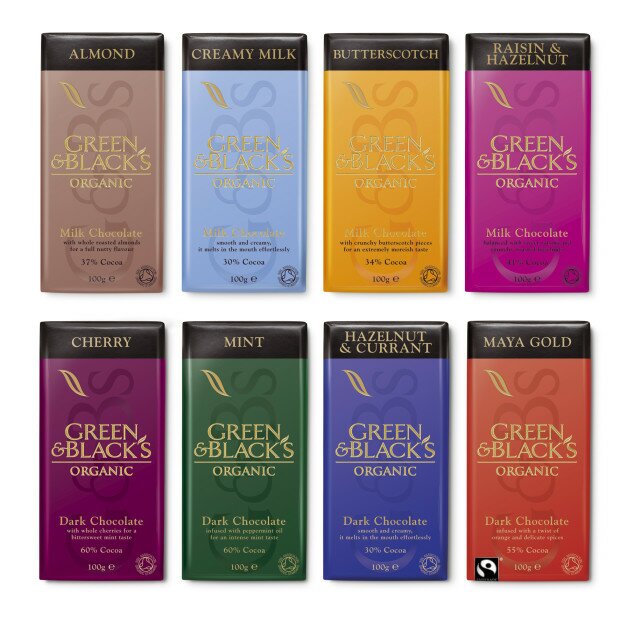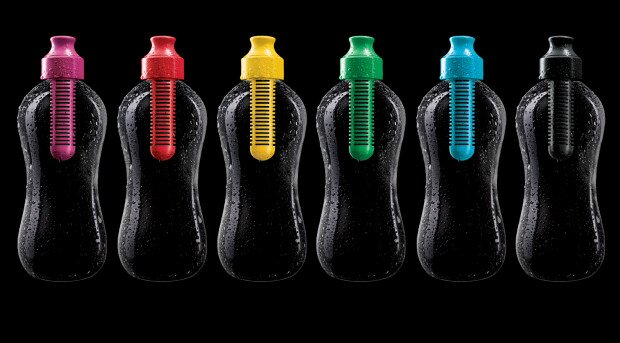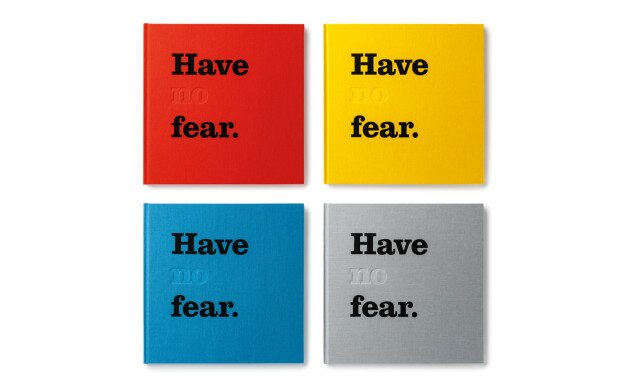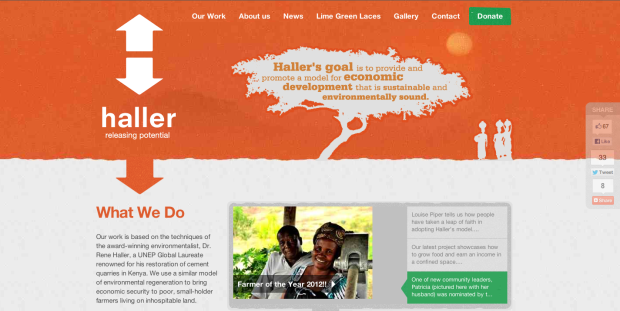Designed to Innovate: Jonathan Ford
Joseph Maduma
February 12th 2013
Welcome to Designed to Innovate, Good Design’s first interview series. Over the next few months Designed to Innovate will highlight insights, case studies and future trends by means of interviews with some of the thought leaders in the world of design, advertising and branding; Good Design will seek to discover what will shape the social innovation scene in 2013 and beyond.
Designed to Innovate: Jonathon Ford
Founding Creative Partner of Pearlfisher
As Creative Partner, Jonathan represents Pearlfisher on the global design stage with a vision and determination that ensures everything they do and say creates an impact. Never one to simply accept the status quo, Jonathan continually provokes and questions the world, inspiring Pearlfisher to create design that makes the future better. His bold imagination and ability to see what’s on the horizon has always been crucial in keeping Pearfisher headed towards new challenges with open minds and fresh eyes.
Formerly Creative Director of Sterling Design New York and Michael Peters New York, Jonathan is one of the company’s co-founders and has seen Pearlfisher grow from fledgling start-up to international design leader and remains very much hands-on. A Director of the Design Business Association (DBA), a Trustee of the Haller Foundation and a committed family man, Jonathan’s personality embodies the spirit of Pearlfisher – a winning combination of big ideas and bigheartedness.
In your own words, what is your definition of innovation?
True innovation is about ideas that make an impact. Anyone can have an idea but the best are those that actually materialize, and in doing so make a positive improvement to people’s lives – be it a product service experience or brand. Lazy or timid approaches to innovation produce nothing, clutter and waste and sadly billions of dollars each year is spent on this. I call it the great corporate innovation swindle.
Do you believe that design has the power to change the world, and if so, how?
Yes I do and it does. However the perception of design is too strongly linked solely to certain disciplines like architecture and product design. The unsung hero of design is brand design and the effect it can have in transforming lives and making things better. Take Green & Blacks chocolate for example, our first and still existing client. A humble chocolate bar, which established fair trade and organic credentials with cocoa farmers in Belize, has now become a beloved icon of everyday chocolate consumers around the world because of its taste and credentials. Design has helped brand its message to a bigger audience, and along the way persuaded its big brother Cadbury to go fair-trade and is now forcing a huge company like Kraft foods (now Mondelez) to examine its reason for being in their brand portfolio. Jobs, livelihoods and stronger economies have been made as this brand has grown.
“The unsung hero of design is brand design and the effect it can have in transforming lives and making things better.”

What are the key attributes that brands will need to survive in the future?
Powerful ideas, truthfulness and transparency. If the last century was about speed and convenience taken to the max, this century surely has to be about clarity and authenticity of choice in a world where everything everywhere is connected, always on and available. So this means you have to stand for something: an idea that makes an impact. The smart brand owners know this, which is why they see design as investment in their brand and the way to build potentially billion dollars worth of brand equity. We should be championing the power of great brand design as a progressive force for change that, as a fundamental part of our society, can and does enrich our wider – and our future – consumer culture. And we are aiming for brand and packaging design to – in the not very distant future – be viewed in the same context and with the same relevance and influence on society as fashion design, architecture, product design etc.
Which challenger brand currently on the market really demonstrates an engaging experience of sustainability through design for the consumer and why?
Method, Help Remedies, Jamie Oliver, Froosh Smoothies, Waitrose to name just a few. As clients or friends of mine I know them well and, being very different brands, they all use design in different ways to create an engaging experience. From packaging materials, to charitable causes, company ethos to supplier relations. To be sustainable, you have to do what is right for others and what is truthful to you, but I am suspicious of brands that lead solely on an ethical basis, and their desirability definitely becomes limited. All those Green, eco, “save the world” brands leading simply on that message alone now suffer the same problem as any crowded sector: they all look alike and sound like a bunch of whining pansies. We all know the world needs care, but it’s a tough place to live in right now so let’s at least bring some joy to people who care about caring. Creative confrontational thinking through authentic brand expression is the key to any challenger brand, never leading only on a worthy sustainable message; sustainability is already built into their DNA as part of their offer, attitude or belief systems.

How can design create engaging experiences that can inspire real behaviour change?
Design creates behavioural change by forcing people to reappraise what they have become used to, by making it better. We have done a lot of work in the bottled water category and no one can knock its reign as a true challenger category in terms of breakthrough design and marketing. And whilst campaign-able brands have shaped the look and feel of this category, water needs to look at its next incarnation. Innovation is only as good as the design communication and so the challenge lies squarely with design to push the boundaries further and create a new design language that goes beyond what we know and have today. And it is its context and expression that will give it meaning – and that will create difference.
And water is also facing challenges from within. Namely with the arrival of The Water Bobble – and Kids Mini Bobble. A few years old now admittedly but since its launch nothing else has yet managed to rival it. In fact, the Water Bobble is already on the road to becoming a beverage icon by doing good (better taste, better for the environment, better for the budget…) and looking good (and so desirably different). The Bobble has shifted the paradigm from transparent to black and opaque. Such a radical change.
“Design creates behavioural change by forcing people to reappraise what they have become used to, by making it better.”

Low-tech innovation is a particular passion of yours. Why is this and why do you believe it has the power to make a difference?
Low-tech innovation is the perfect antidote for the biggest populations – the poor.
Technology has changed our world forever and has created a global and interconnected community. But, as part of this multi-million dollar and future focused community we also need to be mindful that for millions – on a daily basis – it’s more a question of ‘if’ they can eat or find access to fresh drinking water. But here too, technology is having a part to play. And, to me, this is probably the more interesting focus as truly creative and low-tech ideas and innovations are showcasing a very different – but just as radical – form of progress.
As a designer, I have always been fascinated by how great design makes things better. But, I’ve always been drawn to ideas that work beyond the type of brand design I do. And there are currently some amazing gadgets, systems and strategies coming out of the developing world that could revolutionize the lives of millions of its citizens. I have been most inspired seeing how the poor live and become resourceful in places like Africa, India and Cuba, where resources are scarce but low-tech innovation is rich.
I believe some of these innovations could also teach us in the Western world to take a step back and look at how we maybe re-apply technology to age-old problems – and, ultimately, to remember that often the most simple is the best. Big brand corporations spend billions of dollars on research and development. However the irony is that barely any of these so-called ‘innovations’ see the light of day. They are not realized because corporate structure, IP protection laws and legislation makes change so hard to push through and also because often what consumers (especially in developing markets) really need is completely different to these so called ‘innovations’.
A strong internal work culture is vital in creating real innovation. Can you give us some examples of how your internal culture at Pearlfisher helps innovation to flourish?
Having and continually nurturing a creative culture is THE reason Pearlfisher has flourished.
Our creative culture is nurtured in different ways. It starts with the three founders – Mike, Karen and I – and is a fusion of our personalities and experiences. We are not your usual clichéd studious or academic designer types, nor are we the suited and booted brigade. We are big kids who like to play, work hard and have a great time with people around us that stimulate us and who are better than us. A creative culture from top to bottom breeds empowerment and energy throughout the teams, all of whom get affirmed through their results, not through who they are.
In our London studio we have a fluid gallery space in which the team can work and in which we house both our own and external exhibitions to continually challenge and inspire thinking and creativity. We recently brought in a 3D printer and a beautiful old letterpress. From opposite ends of a similar trade, these two machines led us to think about a new movement in design that is uniting previously detached points of the same spectrum – but, essentially, about how we view and use our craft – and innovate with design moving forward. We also host inspirational talks from experts in very different fields, from record breaking transatlantic rowers to neurological experts – enabling us to find inspiration from different places and people.
To celebrate our 20th anniversary we are just about to launch a book entitled ‘Have No Fear’. It is a collaborative work that has been produced by Pearlfisher’s studios in London and New York. It is a celebration of graphic design and is made up of 20 powerful beliefs that have defined Pearlfisher over the last 20 years. Ultimately, the book is a powerful reminder to anyone with a desk job and a dream of the importance to be brave, to seek out and create the new, and to take risks along the way. At Pearlfisher we champion risk takers. Those that challenge, discover and dream – and in doing so create change that makes the world a better place.
“At Pearlfisher we champion risk takers. Those that challenge, discover and dream – and in doing so create change that makes the world a better place.”

An innovative idea has the power to be world changing. But it is no use if it cannot be scaled. Can you name any examples of big ideas scaled well? Or are there any scaling up approaches that you would like to see applied more to achieve change at a mainstream level?
The future for phenomenal scaling of innovation opportunity will be through, on and for the internet, social media and mobile. It will also be the cause of and avenue for the death of many brands. Arguably cloud based software and branded offers will lead to the miniaturisation and mass extinction of many products.
Think about it – your single mobile device now can do the tasks of a multitude of individual products, books and services. When that power is truly in the hands of the entire world’s population the on and offline brands that harness that reach will have changed the world and changed themselves.
In my recent Challenger & Icons podcast series I spoke to Claire Diaz Ortiz, Head of Innovation for Twitter, () who gave me a really powerful view on how social media access has transformed attitudes, societies and governments and institutions around the world. For a brand to have that power and be free and good is the key to understanding what is possible – even if you are not an online brand.
The reason I am so inspired by the Haller Foundation (http://www.haller.org.uk Jonathan is a trustee) is that it shows how small scale innovation – that can affect the individual – can also have a massive impact on thousands. This is because it is do-able in practice by just the individual. The Haller Foundation ‘releases potential’ because it enables individuals to improve their lives in urban slums by creating mechanisms that allow for vegetation growth (for human and animal food), electric light and drinking water. When this is utilized by thousands it improves complete urban slum populations – as well as life for the individual. Brands and businesses can also learn from this approach. I spoke about this at PSFK and you can see the talk here.

“I’d like to say we helped create brands that did good and made lives better for people, and inspired others to do the same.”
10 years from now what major changes do you hope to see as a result of sustainable and social innovation? What is your vision of a better future?
My vision of the future is a more sustainable and less-impoverished one where design has made a huge impact in making things better for people and the environment. I’m not sure if we can do it in 10 years but the tools, knowledge, global community and awareness is out there to eradicate poverty, hunger, corruption and vile corporate, religious and government behavior certainly in the next 30. This does not mean a homogenized world with a Starbucks and McDonalds on every street corner.
This world is not in recession – it is in huge change and it won’t go back to the way it was. We need creative, brave, challenger ideas that break out of the rut in all walks of life to bring personal, social, commercial and brand revolution. I want to see design empowered and embraced across all disciplines as it is design that has the potential to bring meaning, innovation to life, bettering lives.
When you retire, what world changing innovation would you like to leave behind or say you have contributed to?
I don’t think I am capable of producing a world-changing idea on the scale implied by your question. But if people want to hear what I have to say then I will shout it from the rooftops: we can design out so many problems in the world (sometimes cheaply and easily). And if governments and institutions want to see how, I will advise and show them how design can do this.
And brands can change the world – for good and bad. I’d like to say we helped create brands that did good and made lives better for people, and inspired others to do the same.
Design has changed and now there is very clearly an art to brand design – but I think that this one half of the story, where the real value lies is in the creation of brilliant ideas. Everything else is simply styling, where the creativity is limited to the scope of the software parameters rather than the universe of the human imagination.